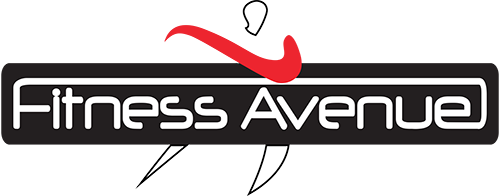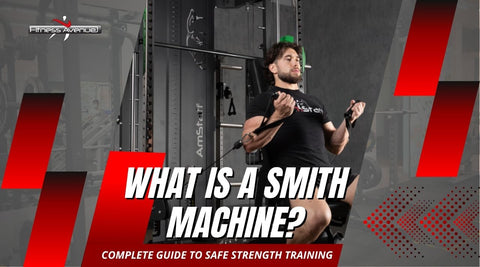When you're ready to elevate your fitness routine, the question "what weighted vest should I get?" becomes crucial for maximizing your training results. Weighted vests offer unparalleled versatility, transforming everyday bodyweight exercises into powerful strength-building and calorie-burning workouts. Whether you're walking, running, or performing bodyweight workouts, the right weighted vest can accelerate your fitness journey while providing safe, progressive resistance that adapts to your growing strength.
Which Weighted Vest Is Best for My Workout Needs?
Choosing the right weighted vest depends on your fitness level, training goals, and body composition. The key principle is to start with 5-10% of your body weight for beginners and never exceed 20% even for advanced athletes. This approach ensures safety while delivering measurable results.
For beginners, we recommend starting with our AmStaff Fitness Weighted Vest, which offers weight options ranging from 6 lbs to 30 lbs. This allows gradual progression as your strength improves. More experienced users may consider our AmStaff Fitness Tactical Weighted Vest, which features top-grade construction and customizable weight options.
The selection process involves evaluating your current fitness level, intended activities, and comfort preferences. Our weighted vest collection includes options for walking, running, strength training, and tactical applications, ensuring there's a perfect match for every training style.
What Are the Benefits of Using a Weighted Vest?
Weighted vests deliver comprehensive fitness benefits that extend far beyond simple resistance training. Research demonstrates that wearing a weighted vest can increase energy expenditure during walking, helping you burn more calories and making it an efficient tool for those looking to lose weight without requiring extreme dietary restrictions.
- Muscle development accelerates through the principles of progressive overload. The distributed additional weight engages stabilizing muscles throughout your core, improving functional strength and posture through increased muscle activation. Unlike handheld weights, vests keep your hands free while providing added resistance that mimics real-world movements.
- Improving bone health represents a crucial advantage, particularly for older adults. The axial loading from weighted vests stimulates osteoblast activity, thereby aiding in building bone, maintaining skeletal strength, and reducing the risk of fractures. This benefit proves especially valuable during weight loss phases when bone density typically decreases.
- Cardiovascular fitness enhancement occurs through increased heart rate and oxygen consumption. Wearing a weighted vest during aerobic activities increases cardiovascular demand, which may help improve endurance and overall fitness capacity over time.
The versatility factor cannot be overstated. Weighted vests transform any environment into a training space, eliminating the need for a gym while providing professional-grade resistance training.
What Should You Look for in a Weighted Vest?

- Quality construction forms the foundation of effective weighted vest training. Look for adjustable weight systems that allow precise load customization. Our AmStaff vests feature removable weight plates, allowing for progression from beginner to advanced levels without the need for multiple products.
- Fit and comfort directly impact training consistency. Properly fitted vests distribute weight evenly across your torso, preventing pressure points and maintaining natural movement patterns. Straps adjust easily to fit various physiques, providing reliable support during high-intensity workouts.
- Material quality determines durability and comfort. Premium vests use breathable materials with moisture-wicking fabrics and reinforced stitching at stress points. High-grade construction, similar to that of our tactical models, ensures longevity even under the most intense training conditions.
- Safety features include quick-release mechanisms, reflective strips for outdoor training, and an ergonomic design that supports proper posture. These elements reduce injury risk while enhancing training enjoyment and effectiveness.
- Consider your weight capacity about your long-term fitness goals. While you might start with a lighter weight, choosing a vest with higher capacity prevents the need for upgrades as your strength improves. The question of how much weight to start with depends on your current fitness level and experience.
Exploring the Most Common Weighted Vest Types
Adjustable weighted vests represent the most versatile option, featuring removable weight plates or pockets that allow customization from 2 to 65 lbs. These best weighted vests suit beginners through advanced athletes, providing excellent value through adaptability. Our adjustable models excel in this category.
- Fixed-weight vests offer simplicity and often superior comfort for specific weight ranges. These single-weight designs typically cost less and provide streamlined profiles ideal for running or walking. However, they lack the capability for progression as fitness improves.
- Tactical vests feature military-inspired designs, multiple pockets, and rugged construction. These vests handle extreme conditions while providing functional weight distribution. Perfect for military training, law enforcement preparation, or adventure fitness enthusiasts.
- Specialty vests include women-specific cuts, youth sizes, and sport-specific designs. These targeted options optimize fit and functionality for particular user groups or activities, ensuring optimal performance and comfort.
Each type serves specific needs, making the selection process about matching vest characteristics to your training priorities and physical requirements.
How to Incorporate Weighted Vests into Your Training
Progressive integration ensures safe adaptation and consistent results. Begin with 15–20 minute sessions, using 5–8% of your body weight, and focus on familiar exercises, such as walking or basic bodyweight exercises. This approach allows your musculoskeletal system to adapt gradually to the extra weight.
Weekly progression involves increasing either weight (2–5 lbs) or duration (5–10 minutes) but never both simultaneously. This controlled advancement prevents overuse injuries while maintaining steady improvement. Track your sessions to monitor progress and identify optimal challenge levels, gradually increasing intensity as your body adapts.
Exercise selection should initially emphasize proper form over intensity. Walking, squats, push-ups, and lunges provide excellent starting points. As comfort increases, incorporate more dynamic movements, such as step-ups, mountain climbers, or jogging intervals.
Recovery protocols become crucial with weighted vest training. Allow 48 hours between intense sessions, focusing on unweighted activities or complete rest. Proper recovery prevents overtraining while maximizing the benefits of adaptation and strength gains.
Periodization helps prevent plateaus and maintains motivation. Alternate between strength-focused weeks (higher vest weight and lower volume) and endurance phases (moderate weight and longer duration). This variation not only optimizes various fitness components but also supports healthy bone turnover, which is especially important for long-term skeletal health.
Are Weighted Vests Worth It?

The investment value of weighted vests becomes apparent through their versatility and effectiveness. Unlike single-purpose equipment, weighted vests enhance virtually any exercise, providing professional-grade weight training at home or anywhere you train.
Cost-effectiveness compares favourably to gym memberships or purchasing multiple pieces of equipment. A quality weighted vest with an adjustable design provides years of progressive training, replacing numerous specialized tools while occupying minimal storage space.
Users report increased strength, enhanced endurance, and accelerated weight loss compared to training without weights. The compound benefits of bone density improvement and cardiovascular fitness add long-term health value, particularly for postmenopausal women, who benefit from added resistance to maintain bone mass and prevent injury.
Also, the convenience factor eliminates common barriers to exercise. Weather, time constraints, or gym access become irrelevant when your resistance training travels with you. This accessibility often translates to improved consistency and better long-term results, especially when guided by a certified trainer to maximize safety and effectiveness.
Research supporting the effectiveness of weighted vests continues to grow, with studies demonstrating benefits across various age groups and fitness levels. From military applications to rehabilitation settings, weighted vests prove their worth through measurable outcomes and user satisfaction.
FAQs
Is a 20lb weighted vest too much?
A 20-pound vest is suitable for intermediate to advanced users, typically those weighing between 140 and 200 pounds. For beginners or smaller individuals, this weight may compromise form and increase the risk of injury. Starting with a lightweight vest featuring adjustable cords can help ensure a proper fit and reduce strain on the shoulder blades. We recommend beginning with 10–15 pounds and progressing gradually based on comfort and performance.
Is a 5kg weighted vest enough?
A 5kg (11-pound) vest provides good resistance for beginners and smaller individuals. Depending on your body weight, this may provide light to moderate resistance suitable for introducing added load to bodyweight exercises. As you progress, an adjustable vest allows you to gradually increase the weight to match your growing strength and comfort level.
What are the cons of weighted vests?
Potential drawbacks include initial discomfort during adaptation, increased joint stress if used improperly, and potential posture issues due to excessive strain. Quality vests, such as our AmStaff models, minimize these concerns through ergonomic design and proper weight distribution.
Is it possible to gain muscle using a weighted vest?
Yes, weighted vests effectively build muscle through the principle of progressive overload. The distributed resistance challenges stabilizing muscles while intensifying bodyweight workouts. Look for vests with adjustable straps to fine-tune resistance, ensuring a snug fit for safety and comfort. Start with a lower weight to maintain proper form. Combine vest training with our weight collection for comprehensive muscle development.
Is it good to wear a weighted vest all day?
Extended wear (beyond 60 minutes) isn't recommended, as it can cause postural fatigue and joint stress. Limit sessions to 30-60 minutes for optimal benefits without negative effects. Focus on the quality of training time rather than its duration.
Is walking with a weighted vest more effective than running?
Both activities offer benefits, but walking provides a safer introduction to exercise training. The lower impact of weight-bearing exercises, such as walking, reduces injury risk while still delivering cardiovascular fitness and strength benefits. Ensure your vest has secure shoulder straps and progress to running only after mastering weighted walking with proper form.
Does a weighted vest help with belly fat?
Weighted vests contribute to overall fat loss by increasing calorie burn during your workout routine. While spot reduction isn't possible, the enhanced metabolic demand and muscle engagement support comprehensive weight management when combined with proper nutrition, guidance from a personal trainer, and choosing the ideal weight for your fitness level.
In Summary
Selecting the right weighted vest requires balancing your fitness level, training goals, and safety considerations. Start with 5–10% of your own body weight, prioritize adjustable models for long-term value, and focus on maintaining good form over maximum weight. Our weighted vest collection offers professionally tested options that grow with your exercise program.
Quality construction, ergonomic design, and progressive integration ensure weighted vests deliver exceptional training value. Suppose you're just starting or looking to elevate your routine. In that case, a weighted vest provides the added challenge needed to boost performance and results, all while offering the same benefit as traditional resistance training.
Remember that consistency trumps intensity. Choose a vest you'll use regularly rather than one that sits unused due to excessive weight or poor fit. With proper selection and application, weighted vests become invaluable training partners that accelerate your path to peak fitness.
Citations:
[1] https://jamanetwork.com/journals/jamanetworkopen/fullarticle/2835505
[2] https://www.trxtraining.com/blogs/news/how-heavy-should-a-weighted-vest-be



